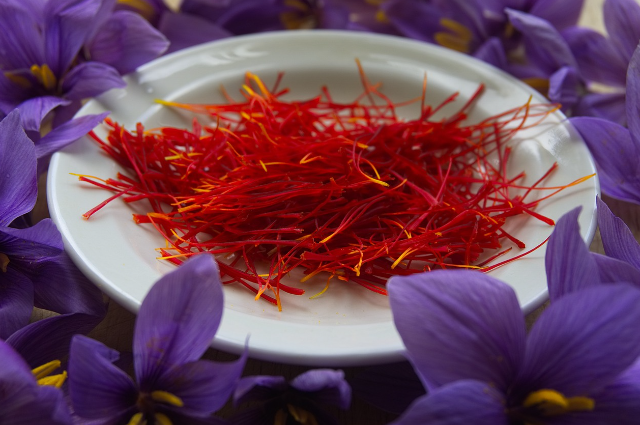
Image by Johan Puisais from Pixabay
Introduction
Kashmir, often referred to as the "Paradise on Earth," is not only known for its breathtaking natural beauty but also for its rich cultural heritage and unique agricultural practices. One of the most prized and iconic products of Kashmir is its saffron, also known as "Kesar" in the local language. Saffron cultivation has been an integral part of Kashmiri culture for centuries, and the region is renowned for producing some of the world's finest and most expensive saffron. In this article, we will delve into the world of Kashmiri saffron cultivation, exploring its history, significance, and the challenges faced by the farmers who cultivate this golden treasure.
History of Saffron Cultivation in Kashmir
Saffron cultivation in Kashmir dates back to the 3rd century BC, when the region was a major center of trade and commerce on the ancient Silk Road. The saffron crocus, a perennial plant that produces the prized spice, was introduced to Kashmir by the ancient Greeks and Romans, who valued it for its vibrant color, flavor, and medicinal properties. Over time, Kashmiri farmers developed a unique method of cultivating saffron, which involved carefully hand-picking the delicate flowers and extracting the precious stigmas.
Significance of Saffron in Kashmiri Culture
Saffron is an integral part of Kashmiri culture and is deeply ingrained in the region's traditions and customs. It is used in various forms, including as a spice, a dye, and a medicine. Saffron is also an important ingredient in traditional Kashmiri cuisine, particularly in dishes such as biryani, kebabs, and desserts. The spice is also used in traditional Kashmiri medicine, where it is believed to have numerous health benefits, including reducing inflammation and improving digestion.
Challenges Faced by Saffron Farmers
Despite the significance of saffron in Kashmiri culture, the farmers who cultivate this golden treasure face numerous challenges. One of the biggest challenges is the labor-intensive process of harvesting saffron, which requires careful hand-picking of the delicate flowers and extraction of the stigmas. This process is not only time-consuming but also requires great skill and patience.
Another challenge faced by saffron farmers is the unpredictable weather conditions in Kashmir, which can affect the quality and quantity of the crop. The region's saffron crop is highly susceptible to weather conditions, and a single spell of bad weather can destroy the entire crop.
Efforts to Promote Saffron Cultivation
In recent years, the government of Jammu and Kashmir has launched several initiatives to promote saffron cultivation in the region. These initiatives include providing financial assistance to farmers, establishing saffron nurseries, and promoting the use of modern technology to improve the quality and quantity of the crop.
Conclusion
Kashmiri saffron is a unique and prized product that is deeply ingrained in the region's culture and traditions. Despite the challenges faced by saffron farmers, the region continues to produce some of the world's finest and most expensive saffron. Efforts to promote saffron cultivation, such as providing financial assistance to farmers and promoting the use of modern technology, are essential to ensuring the long-term sustainability of this golden treasure.
